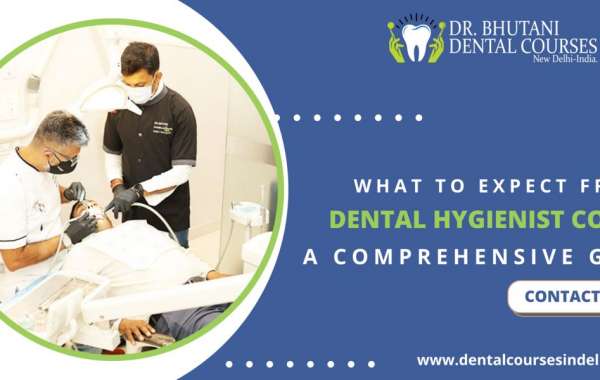A dental hygienist course is a structured program designed to provide individuals with the knowledge and skills necessary to pursue a career in dental hygiene. This field plays a critical role in oral healthcare by preventing and treating oral diseases. If you’re considering enrolling in a dental hygienist course, here’s a comprehensive guide on what to expect:
1. Introduction to Oral Health and Dentistry
The course typically begins with an overview of oral health and dentistry. You’ll learn the foundational aspects of dental hygiene, including the importance of oral care, preventive measures, and patient education. This part of the course also introduces dental ethics, patient confidentiality, and the responsibilities of a dental hygienist.
2. Dental Anatomy and Physiology
Understanding the anatomy and physiology of the mouth is crucial for a dental hygienist. The course covers the structure of teeth, gums, and the surrounding tissues. You’ll learn about different types of teeth, their functions, and how oral diseases develop. This knowledge allows dental hygienists to better assist dentists and educate patients about their oral health.
3. Infection Control and Safety Procedures
Infection control is a major part of dental hygiene. The course will focus on sterilization techniques, the use of personal protective equipment (PPE), and safe disposal of hazardous materials. This section is vital for ensuring a safe working environment for both the dental team and patients. Practical lessons include hands-on training in maintaining hygienic conditions in a clinical setting.
4. Dental Procedures and Patient Care
A dental hygienist works closely with dentists during various procedures. The course teaches you how to assist with cleanings, dental examinations, fluoride treatments, and sealant applications. You’ll also learn techniques for handling dental instruments and providing patient care. Another critical skill covered is how to calm anxious patients and ensure they feel comfortable during procedures.
5. Radiography and Diagnostic Techniques
Taking dental X-rays and interpreting them is an essential part of a dental hygienist’s role. The course will provide you with training in radiography techniques, including the safe use of equipment, proper positioning, and understanding X-ray safety regulations. This allows you to assist dentists in diagnosing and planning treatment for patients effectively.
6. Periodontal Therapy
Periodontal diseases, such as gum disease, are common conditions that dental hygienists help treat. You’ll be trained in scaling, root planing, and other non-surgical methods of periodontal therapy. This section of the course focuses on preventive care and managing patients with gum diseases.
7. Patient Education and Communication
An essential role of a dental hygienist is educating patients about oral health. You’ll learn how to communicate effectively with patients, provide personalized oral hygiene advice, and explain complex dental procedures in simple terms. Proper patient communication helps in promoting lifelong oral health habits.
8. Hands-On Training and Clinical Experience
Practical experience is a cornerstone of dental hygienist education. Most courses include hands-on training in a clinical setting, where you’ll work under the supervision of experienced professionals. This allows you to apply theoretical knowledge to real-life situations, gaining confidence in your skills.
9. Job Placement and Career Opportunities
Many dental hygienist courses offer job placement services upon completion. With the increasing demand for dental care, certified dental hygienists can find employment in dental clinics, hospitals, and specialized practices. Completing the course equips you with the credentials required to pursue a successful career in the dental field.














